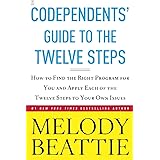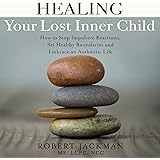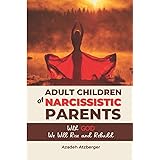As Cecilia Rovetta discusses in the video above, understanding and treating Internet Addiction is a pressing concern in our rapidly evolving digital world. This phenomenon, though relatively recent, shares significant commonalities with more recognized addictive behaviors like compulsive gaming and substance dependencies. This means we’re not entirely in uncharted territory; established therapeutic models, especially within the cognitive-behavioral approach, offer valuable guidance for addressing this modern challenge.
The journey to defining Internet Addiction is still ongoing, with researchers actively working towards a consensual understanding. However, the impact it has on individuals is undeniably real, affecting their daily lives and overall well-being. Recognizing the signs and understanding the pathways to recovery are crucial first steps for anyone concerned about their own, or a loved one’s, online habits.
Recognizing the Echoes of Internet Addiction
While the digital landscape feels unique, the symptoms of Internet Addiction often mirror those seen in other forms of dependency. Think of it like a new type of car that still has the same fundamental engine problems as older models. The external packaging might be different, but the internal mechanics of addiction show similar malfunctions.
One of the most telling signs is an excessive preoccupation and constant rumination about internet use, even when offline. It’s like having a digital echo chamber inside your head, where thoughts constantly loop back to online activities. This persistent mental engagement often leads to a significant loss of control over one’s online time, often ignoring the negative consequences that arise.
Common symptoms of Internet Addiction include:
- **Excessive Worry and Rumination:** Your mind is frequently consumed by thoughts of your next online session, or dwelling on past online interactions. It’s like a song stuck on repeat, but about the internet.
- **Loss of Control:** Despite intentions to cut back, you find yourself spending more and more time online. It’s similar to trying to slow down a speeding train; once it gains momentum, it’s hard to stop.
- **Neglecting Negative Consequences:** You continue excessive internet use even when it impacts your job, relationships, or health. The immediate gratification of being online overshadows the long-term damage.
- **Tolerance:** Just like some substances, you may find yourself needing increasingly more time online to achieve the same level of satisfaction or escape. What once satisfied now feels insufficient.
- **Social Withdrawal Symptoms:** When you try to reduce internet use, you might experience irritability, restlessness, or anxiety. These are your body and mind reacting to the absence of a привычный (familiar) stimulant.
- **Inability to Manage Offline Life:** Crucial aspects of your life, such as responsibilities, hobbies, and personal relationships, take a backseat to online activities. Your offline life starts to feel like a faded photograph next to a vibrant, ever-present digital screen.
These difficulties often leave individuals feeling unable to manage essential aspects of their offline lives. The endless pull of online activities and the constant concerns related to internet overuse can create a significant disconnect from reality, making it hard to engage with the world beyond the screen.
How Cognitive-Behavioral Therapy (CBT) Offers a Roadmap to Recovery
Fortunately, as highlighted in the video, established intervention models like Cognitive-Behavioral Therapy (CBT) provide a robust framework for treating Internet Addiction. CBT is like a GPS system for your mind, helping you navigate away from problematic thought patterns and behaviors. It doesn’t just tell you where to go; it teaches you how to read the map yourself.
The core principle of CBT is simple yet powerful: your perceptions directly influence how you react to specific situations. During therapy, you learn to observe the intricate connection between your thinking processes, behaviors, and emotions. It’s about recognizing that your thoughts aren’t just random; they have a direct impact on how you feel and what you do, especially concerning your internet use.
Unpacking the CBT Process for Internet Addiction
CBT for Internet Addiction involves several key components, each designed to empower individuals to regain control and foster healthier digital habits:
- **Understanding the Thought-Emotion-Behavior Loop:** You’ll learn to identify how specific thoughts about the internet (e.g., “I need to check my phone,” “I’ll miss out if I’m not online”) trigger certain emotions (anxiety, excitement) that then drive your behavior (excessive scrolling, gaming). Breaking this loop is crucial.
- **Identifying and Restructuring Dysfunctional Beliefs:** Many individuals with internet addiction hold underlying beliefs that fuel their behavior. For instance, they might believe the internet is their only source of social connection or a necessary escape from stress. CBT helps challenge these beliefs, much like questioning whether a worn-out map is still the best guide.
- **Developing Harm Reduction Strategies:** This involves practical steps to manage and reduce problematic internet use. It’s not necessarily about complete abstinence, but about setting healthy boundaries. This could mean scheduling specific “offline times,” finding alternative activities, or using apps to monitor screen time. It’s like building a fence around a digital pasture to prevent overgrazing.
- **Building Stability and Trust:** Therapy helps create a supportive environment where you can trust the process and your ability to change. This stability is essential for implementing new tools and strategies learned in therapy, allowing them to take root and flourish in your daily life.
Preventing Relapses and Building a Resilient Digital Life
One of the most critical aspects of any addiction treatment, including for Internet Addiction, is relapse prevention. It’s not enough to simply reduce problematic behavior; you need strategies to prevent falling back into old patterns. Think of it as strengthening your immune system against future digital cravings.
Effective therapy helps individuals identify potential triggers that might lead to excessive internet use. These triggers can be internal, like feelings of boredom or loneliness, or external, such as specific times of day or social situations. Recognizing these “warning signs” is the first step in rerouting your response.
Once triggers are identified, the focus shifts to developing alternative behaviors and robust recovery strategies. Instead of instinctively reaching for a device when bored, you might learn to pick up a book, go for a walk, or connect with a friend offline. It’s about consciously choosing a different path when confronted with the familiar crossroads of temptation.
This ongoing process requires self-awareness, practice, and often, professional support to navigate the complexities of our digital world. The journey towards a balanced and healthy relationship with the internet is a marathon, not a sprint, and having the right tools and strategies makes all the difference.











